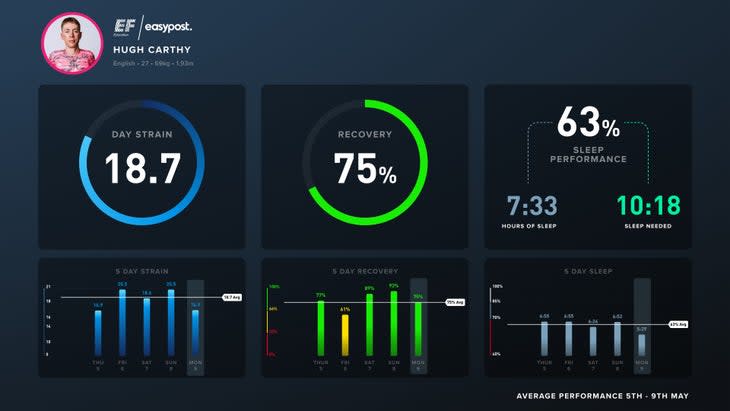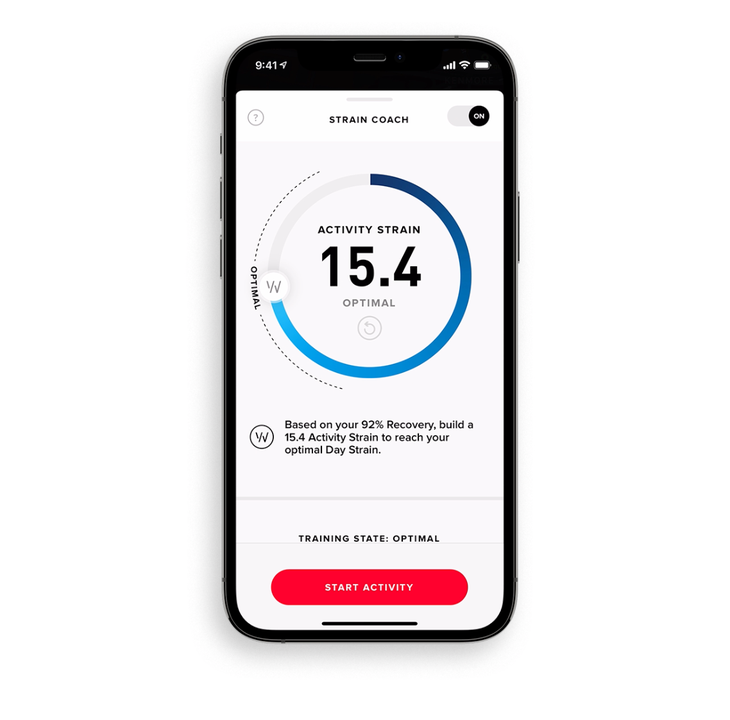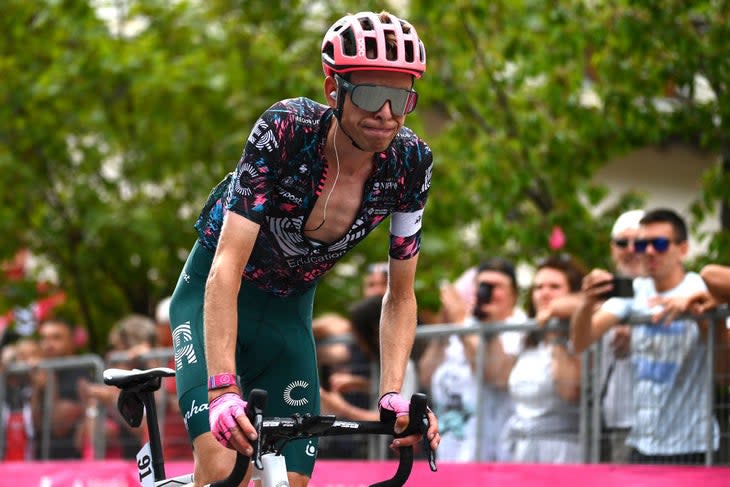What is Whoop? A complete guide
This article originally appeared on Velo News
You may have spotted the silver strap on the wrist of Mathieu van der Poel, or on the arms of many others including the entire team of EF Education-EasyPost at the recent Giro d’Italia. This simple strap is the Whoop 4.0 band, and it's the latest fitness-tracking wearable from Whoop.
The Whoop strap is not only designed for serious athletes, but also for the everyday wearer who wants to add structure to their health and fitness. With the Whoop app, you no longer have to play the guessing game after an evening beer or a poor night of sleep. The Whoop 4.0 band is designed to track crucial health and fitness metrics around the clock, and provide guidance on how you should train to get the most out of your workout.
Also read: Review: Whoop Strap 4 is a leap forward in accuracy of recovery monitoring
One of the standout features is Whoop’s sleep-tracking ability which is said to be among the best in the business. And while the Whoop 4.0 band is designed for everyone, we are here to talk about its applications for elite athletes, and specifically, Whoop strain values.
What is Whoop?

Whoop is a fitness-tracking and fitness-coaching wearable and app that uses physiological data to simultaneously improve your training and fitness. Its latest product is the Whoop 4.0 band, which is a sleek and comfortable wrist strap that can be worn and utilized 24/7.
In order to access and analyze your data, you can use the Whoop app which houses all of the data and coaching software for the system. Specifically, Whoop provides three areas for data analysis: strain, recovery, and sleep.
Basically, Whoop measures how much stress you experienced through life and exercise, how well you recover from it, and how well you sleep. Whoop then takes this data and uses it to give recommendations on how you can improve your performance.
The Whoop 4.0 strap records your heart rate, heart rate variability (HRV), blood oxygenation levels, breathing rate, and skin temperature throughout each day. Most users wear the strap on their wrist, although this doesn't have to be the case - Whoop Body is a new range of smart apparel from Whoop that holds the strap for you in different places around your body, and there is a bicep band available as well.
Importantly, Whoop is purely a physiological fitness-tracking device, and so it does not include any features such as GPS tracking or power meter connection. That means that you won't be able to use the Whoop 4.0 band as a GPS watch or as a cycling head unit - all the data is Whoop’s own, with no connections to additional sensors.
Explaining Whoop strain values

You probably saw Whoop strain values flash across the screen while watching the Giro d'Italia.
Whoop made its name known during the tour, even if many viewers had no idea what was being shown. Along with basic heart rate data, the Giro broadcasts also showed mid-race Whoop strain values during the race, often ranging from 18 to 21.
These numbers represent Whoop’s strain value, or the measurement of cardiovascular load placed on the body throughout the day - or during a specific activity. Strain is measured based on the percentage of time that you spend in your individual heart rate zones, and so the harder you are working, the higher your strain values.
Whoop strain values are especially intriguing because they are not only affected by exercise, but also by other sources of stress and anxiety such as work or family. The maximum strain value on Whoop is 21, which explains why we never saw a number higher than that at the Giro.
How to use Whoop strain values

Whoop strain values are a helpful way to track your activity and training, as well as your life stress and recovery.
There is also a Whoop “Strain Coach,” which gives you a target training load for the day based on your recent recovery. In other words, the “Strain Coach” tells you when you are ready to go hard, or when you need a rest day. This is a crucial tool for athletes as they aim to get the most out of every training session without inching towards excessive fatigue or burnout.
Users love Whoop because it takes much of the thinking out of training and recovery - Whoop calculates your strain and recovery for you, and then tells you what to do the next day. If you've ever questioned your training plan before (i.e. everyone), Whoop could be a game-changer for you.
When it comes to recovery, Whoop gives you a “recovery score” at the beginning of each day, ranging from 0 percent to 100 percent, as well as red-yellow-green scores, with red being the lowest recovery and green being the highest. In summary, red recovery scores from 0 percent to 33 percent mean that you have experienced lots of stress and have not yet recovered - in this case, you should have a rest day.
Yellow scores range from 34 percent to 66 percent and suggest a moderate amount of activity to maintain optimal health and fitness. And finally, there are green recovery scores ranging from 67 percent to 100 percent which mean that you are very recovered and ready to achieve a peak performance.
Whoop’s sleep score work in a similar way, providing a 0-100 percent score each morning. In addition to basic sleep-tracking, Whoop will recommend as optimum bedtime and wake-up, specifically designed for your unique sleep cycles.
You can use Whoop data to not only monitor the effectiveness of your workout sessions, but also to track your sleep and recovery. Many users have experienced epiphanies around certain practices they once thought were harmless. Alcohol consumption, specifically, can have a significant impact on your sleep and recovery, as many Whoop users have realized once they started using the app.
Overall, Whoop is an impressive recovery tool which you can use to test out different foods, drinks, and practices. If you've never tried a plant-based diet, for example, you could try one for a month and see how it affects your sleep, recovery, and performance on Whoop.
Full range of Whoop products

As previously mentioned, Whoop Body is a new line of apparel from Whoop which is specifically designed to hold the Whoop strap so that you don't have to wear it on your wrist or bicep. According to Whoop, "these technical garments are designed with built-in pods to house your Whoop 4.0 and capture data across your body."
Offerings include men's training gear, women's “Intimates Pack,” as well as Any-Wear™ boxer, performance thong, women's everyday shorty, bralette, adjustable bralette, short, athletic boxer, compression top, arm sleeve, leggings, and sports bra.
You can buy additional Whoop battery packs for the 4.0 band for $49 each, though the 4.0 band is rechargeable and can run for up to five days before needing to be plugged in.
Whoop straps come in many different colors, and you can upgrade to the all-new Superknit Band for $99. There are too many options to list them all here, but featured colors include ember, gold, midnight, platinum, ivy, rose, onyx, and arctic.
The Whoop 4.0 band is not without a cost, and that is $30 per month membership to Whoop with the band included. Whoop provides a discount to those who extend their membership, and you can pay $300 for 12 months, or $480 for 24 months of a Whoop membership.
For exclusive access to all of our fitness, gear, adventure, and travel stories, plus discounts on trips, events, and gear, sign up for Outside+ today.

